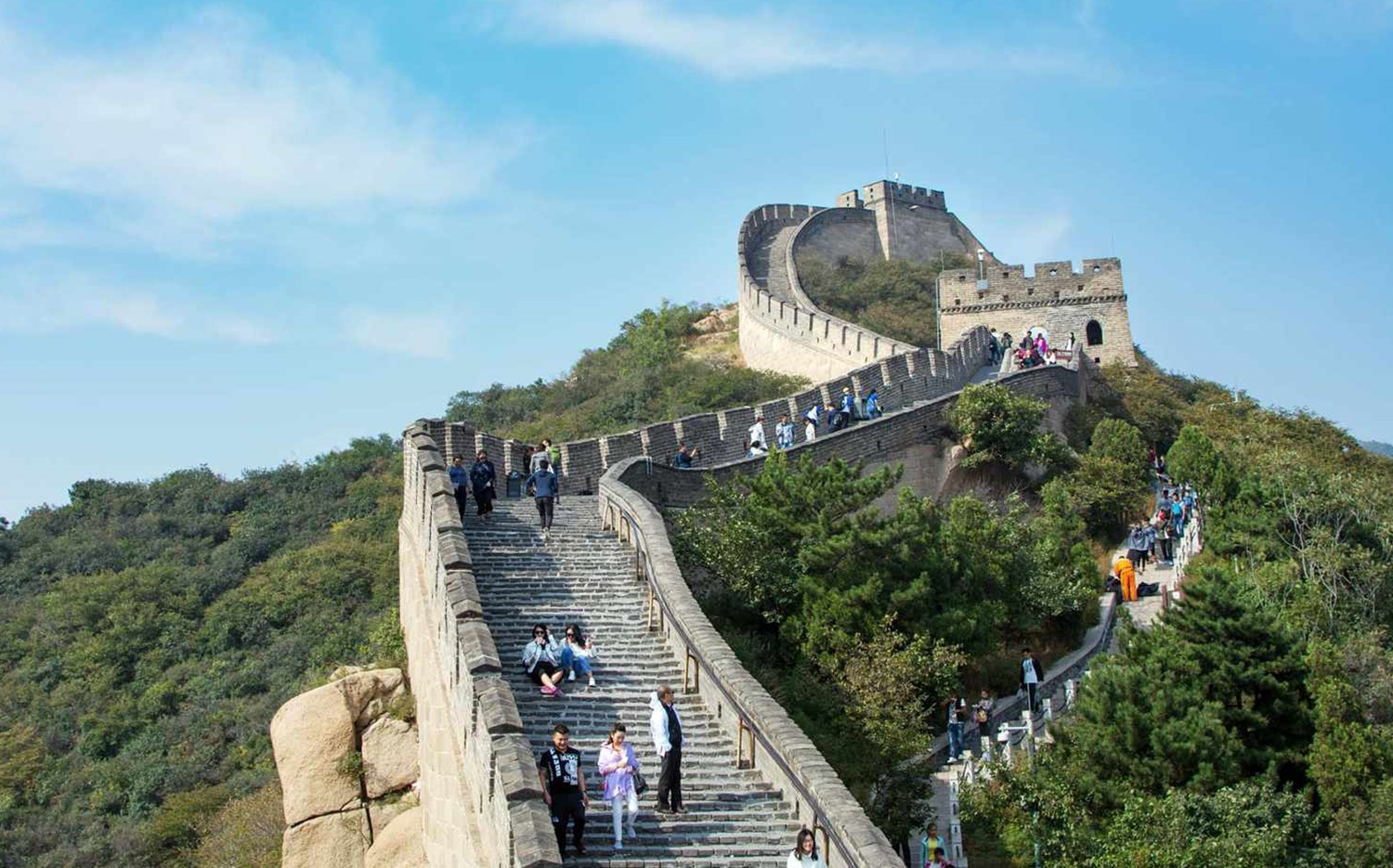 Location of the Great Wall of China
Location of the Great Wall of China
The Great Wall runs across northern China, spanning multiple provinces and municipalities including Beijing, Hebei, Shanxi, Gansu, Inner Mongolia, and Liaoning. The most famous and best-preserved sections of the wall are located near Beijing, making it accessible for international tourists.
-
Badaling Section (Beijing): The most visited and well-restored part of the wall, popular for first-time visitors.
-
Mutianyu Section (Beijing): Known for its scenic beauty, lush forests, and fewer crowds.
-
Jinshanling Section (Hebei): A favorite among hikers and photographers for its rugged beauty.
-
Jiayu Pass (Gansu): The westernmost end of the wall, historically an important military stronghold.
-
Shanhaiguan (Hebei): Where the Great Wall meets the Bohai Sea, famously called the "First Pass Under Heaven."
The wall covers an astonishing distance of more than 21,000 kilometers (13,000 miles), making it the longest man-made structure in the world.
A Glimpse into History
The origins of the Great Wall date back over 2,000 years, with construction beginning during the Warring States Period (7th–4th centuries BC). It was later unified and expanded by Emperor Qin Shi Huang during the Qin Dynasty (221–206 BC) to protect China from northern invasions. Over centuries, different dynasties, particularly the Ming Dynasty (1368–1644), contributed to building and strengthening the wall we see today.
The wall was not just a military defense—it was also a symbol of unity, trade, and cultural exchange, playing a key role in protecting the Silk Road routes that connected China to Central Asia and beyond.
Architectural Marvel
The construction of the Great Wall is a masterpiece of ancient engineering. Built using stone, brick, tamped earth, wood, and other locally available materials, the wall adapts to the unique geography of each region. Its height varies from 15 to 30 feet, and its width was designed to accommodate horse-drawn carriages and soldiers marching in rows.
Watchtowers, beacon towers, barracks, and fortresses were strategically placed along the wall, serving as lookout points, signaling stations, and shelters for troops. These features made the wall not only a physical barrier but also a well-coordinated military defense system.
What to See and Do at the Great Wall of China
Visiting the Great Wall is not just about walking on ancient stones; it’s about experiencing a living monument of human history. Here are the highlights and activities tourists can enjoy:
-
Hiking the Wall
Adventure seekers can hike along different sections of the wall. The Mutianyu and Jinshanling areas are ideal for hiking, offering a mix of restored and wild sections with breathtaking panoramic views. -
Photography Opportunities
From sunrise over the mountains to misty valleys beneath the towers, the Great Wall is a dream destination for photographers. Each section offers unique landscapes, from rugged cliffs to green forests. -
Cable Car and Toboggan Rides
At sections like Mutianyu, visitors can take a cable car up for easy access or enjoy a thrilling toboggan ride down after exploring. -
Cultural Insights
Explore small museums and exhibitions near certain sections, where you can learn about the history of the wall, ancient weapons, and the lives of the workers who built it. -
Camping and Stargazing
Some less crowded sections allow camping overnight. Imagine stargazing from atop the ancient wall, surrounded by silence and history.
Best Time to Visit the Great Wall of China
The Great Wall is open year-round, but the best times to visit are spring (April–June) and autumn (September–November). During these months, the weather is pleasant, skies are clear, and the natural scenery is at its peak—lush greenery in spring and colorful foliage in autumn.
-
Summer (July–August): Can be very hot and crowded.
-
Winter (December–February): Offers a unique view of the wall covered in snow but requires warm clothing due to freezing temperatures.
Travel Tips for Tourists
-
Wear Comfortable Shoes: You’ll be walking or hiking for hours on uneven steps.
-
Bring Water and Snacks: Facilities may be limited depending on the section you visit.
-
Avoid Peak Holidays: National holidays in China, like Golden Week in October, bring large crowds.
-
Hire a Guide: To truly understand the wall’s rich history, consider hiring a local guide.
-
Plan Your Section Wisely: If you want a tourist-friendly experience, go to Badaling. If you prefer fewer crowds and more adventure, head to Jinshanling or Simatai.
Why Visit the Great Wall of China?
The Great Wall is more than just stones and bricks—it is a timeless story carved into the earth. It represents China’s resilience, cultural pride, and its role in shaping world history. Standing on the wall, you don’t just see the landscape—you feel the weight of centuries, the footsteps of soldiers, and the determination of an ancient civilization.
It is a journey that blends adventure with education, history with breathtaking views, and cultural appreciation with unforgettable memories.
Conclusion
The Great Wall of China is not just a monument—it is an experience that every traveler should have at least once in their lifetime. From its vast length and majestic watchtowers to its historical significance and architectural brilliance, the wall is a living legend. Whether you explore the bustling Badaling, the scenic Mutianyu, or the untouched wilderness of Jinshanling, you will discover that every step on the wall is a step through history.

You must be logged in to post a comment.